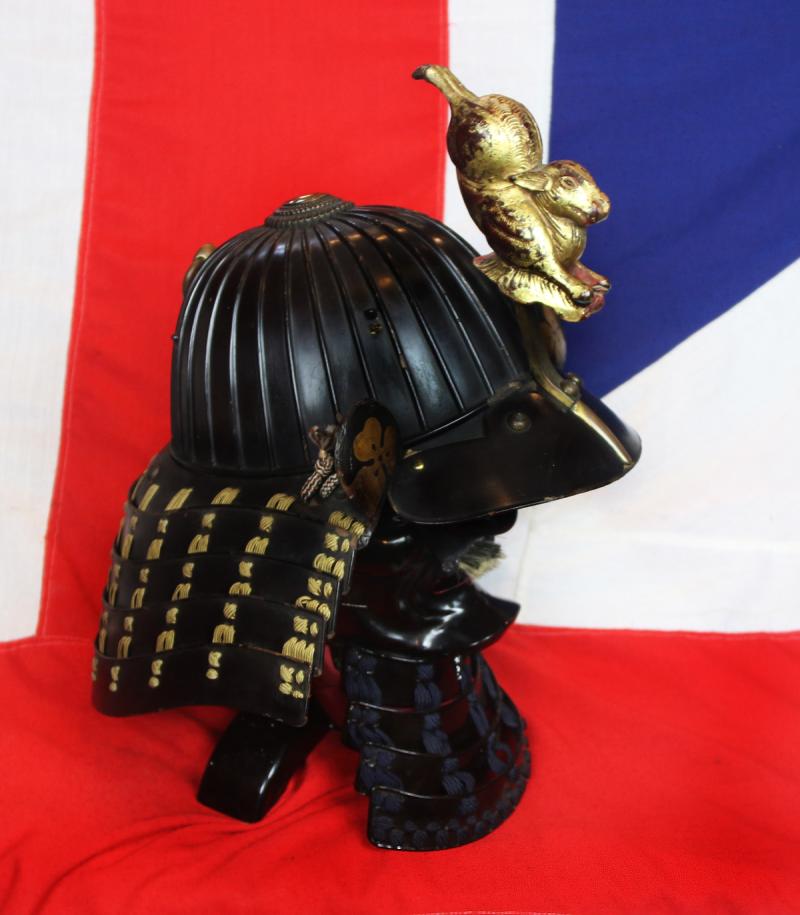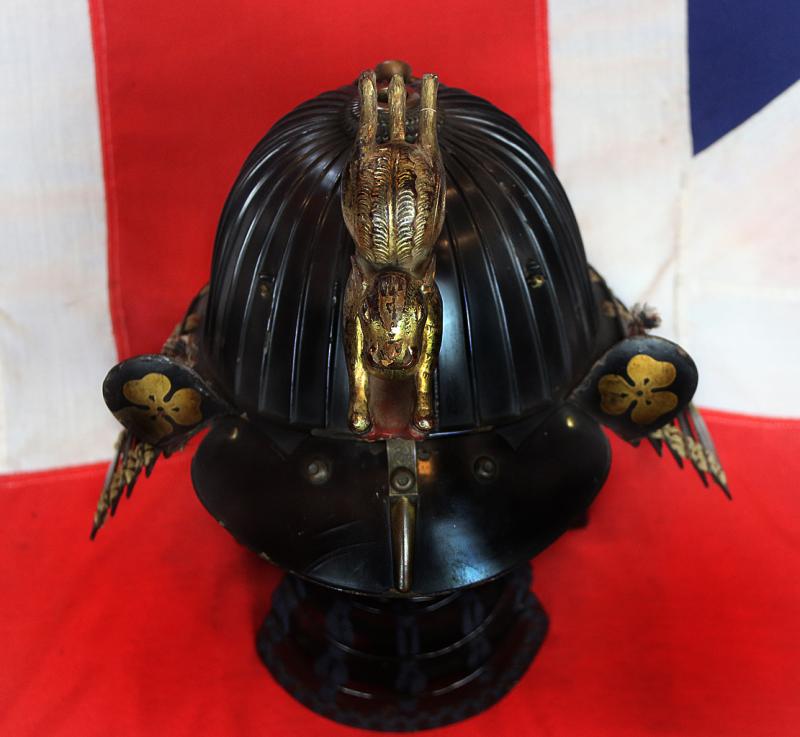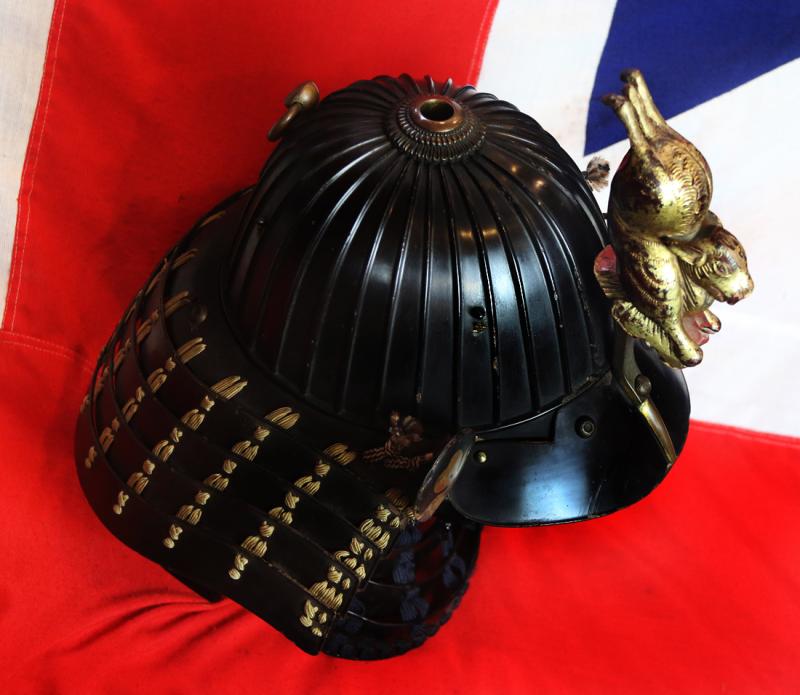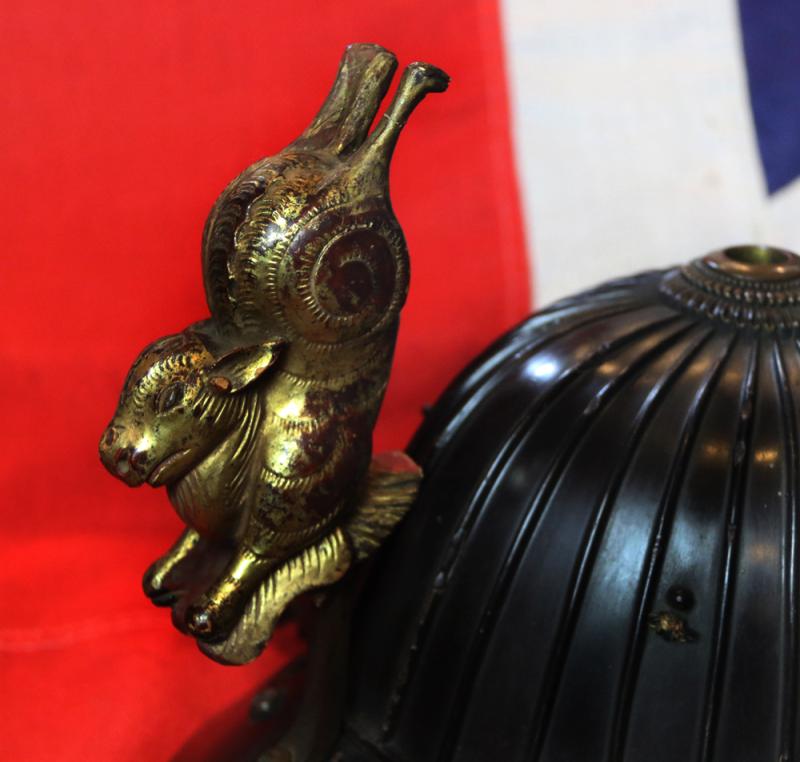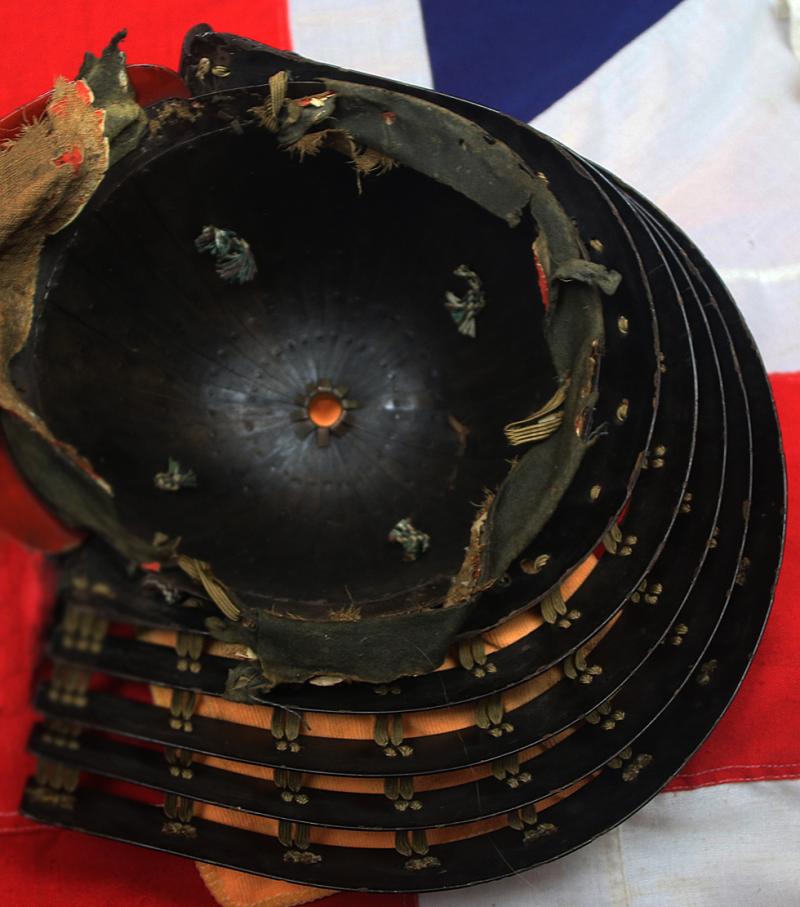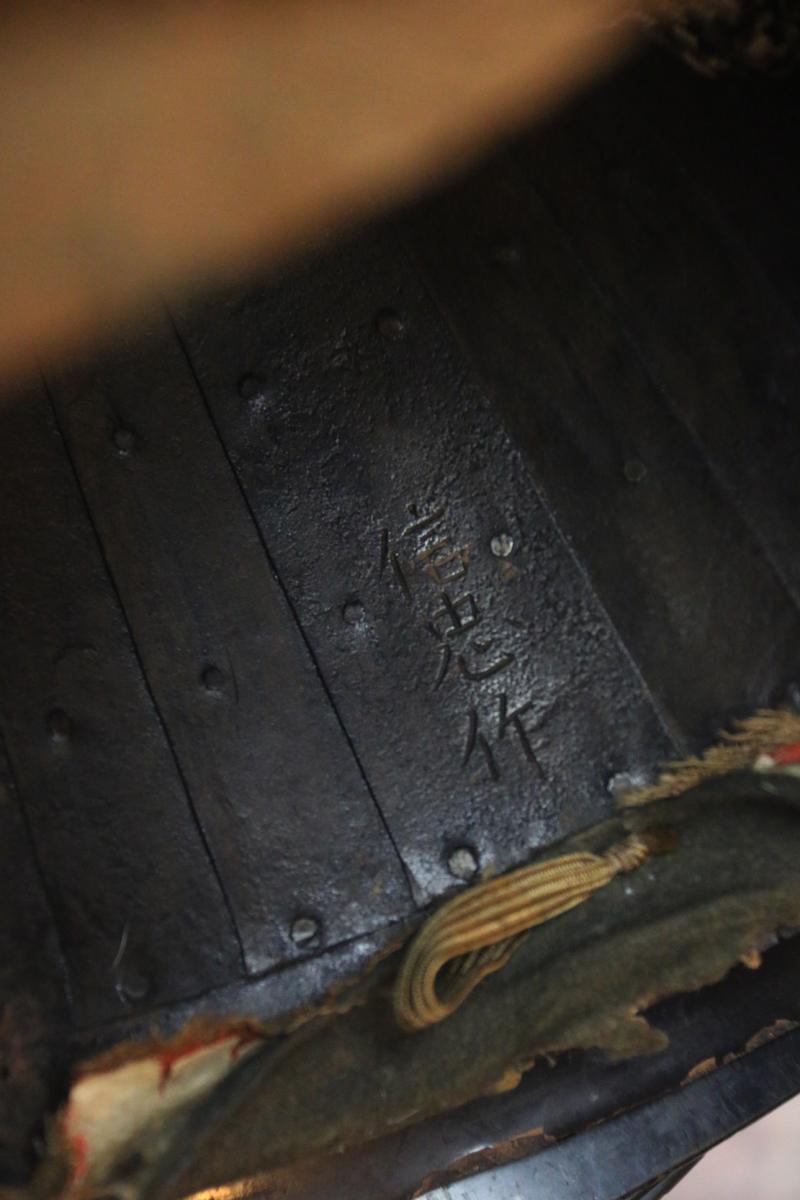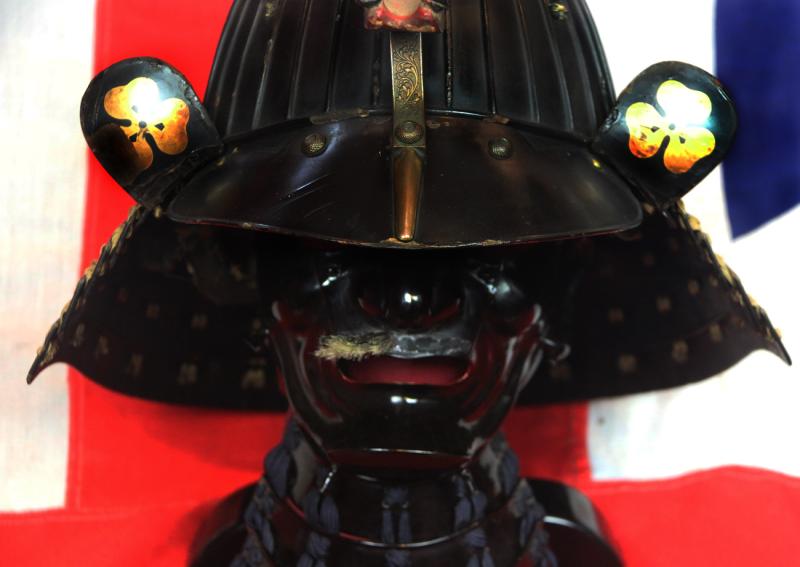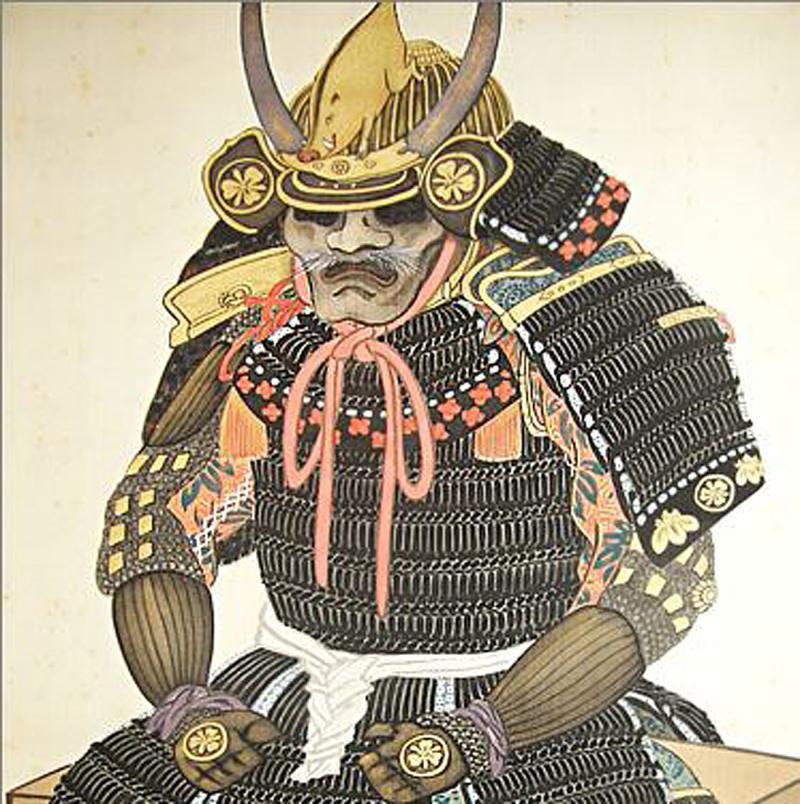A Superb Early to Mid Edo Signed Samurai Helmet Kabuto, by Nobutada, Comprised of 21 Helmet Skull or Bowl Plates, with Leaping Animal Carved Wooden and Gold Maedate & Clan Katabami Mon of the Sakai.
21 plate goshozan sujibachi kabuto, with ressei {fierce face } menpo face armour.
Probably 17th-18th century. A 21 ken plate Sujibachi, which is a multiple-plate type of Japanese helmet skull bowl with raised ridges or ribs showing where the 21 tate hagi-no-ita (helmet plates) come together creating the main skull bowl bachi, and culminating at the multi stage tehen kanamono finial, with the fukurin metal edges on each of the standing plates. The mabisashi peak is lacquered and it has a four-tier lacquered iron hineno-jikoro neck-guard laced with gold, and the skull is surmounted by a gilt-lacquered wood leaping animal, the maedate (forecrest), possibly a rabbit or deer, the Fukigaeshi shows the mon crest symbol of a plain katabami mon {wood sorrel}.
It's one of popular Kamon that is a design of flower of oxalis corniculata.
The founder had wished that their descendants would flourish. Because oxalis corniculata is fertile plant.
Used by clans such as the Sakai, including Sakai Tadayo
Sakai Tadayo (酒井 忠世, July 14, 1572 – April 24, 1636) was a Japanese daimyō of the Sengoku period, and high-ranking government advisor, holding the title of Rōjū, and later Tairō.
The son of Sakai Shigetada, Tadayo was born in Nishio, Mikawa Province; his childhood name was Manchiyo. He became a trusted elder (rōjū) in Toyotomi Hideyoshi's government, alongside Tokugawa Ieyasu. Under Hideyoshi, he was made lord of Kawagoe Castle (in Musashi Province, today Saitama Prefecture) and later of Nagoya Castle in Kyūshū's Hizen Province. In 1600, in the lead-up to the decisive Sekigahara campaign, he fought against the Tokugawa at Aizu, and submitted to them at the siege of Ueda. Thus, having joined the Tokugawa prior to the battle of Sekigahara itself, Sakai was made a fudai daimyō, and counted among the Tokugawa's more trusted retainers. He served under Ieyasu for a time, and under the second shōgun, Tokugawa Hidetada, as a hatamoto.
The lacquered iron menpo (face mask) with four-lame yodarekake face armour. The kabuto is signed on the interior Nobutada saku Nobutada made this
After the introduction of firearms, smoke blanketed many battlefields, causing confusion for the troops. So they could be more readily identified, samurai began to wear helmets with elaborate ornaments at the front, back, or sides, often featuring an intricate crest (maedate).
In their quest for unique and meaningful armour, samurai turned to nature, folklore, or religion for inspiration. Whatever the source, they selected designs for their armor that would set them apart and communicate their personality and beliefs, whether whimsical, frightening, or spiritual.
An antique woodblock print in the gallery, likely of Sakai Tadayo, showing his kabuto decorated with his sakai clan mon of the katabami, he also has a leaping animal as his maedate helmet crest as has ours.
The face armour, mempo, has only a partial moustache present, we are having the brush moustache restored to its former full condition. The Fukigaeshi on the left facing side of the helmet shows the mon crest symbol of a plain katabami mon but small surface lacquer area partly missing. There are very small age nicks to the helmet lacquer. It has its original helmet lining but most removed back to reveal the signature
Every single item from The Lanes Armoury is accompanied by our unique Certificate of Authenticity. Part of our continued dedication to maintain the standards forged by us over the past 100 years of trading
Every single item from The Lanes Armoury is accompanied by our unique Certificate of Authenticity. Part of our continued dedication to maintain the standards forged by us over the past 100 years of our family’s trading, as Britain’s oldest established, and favourite, armoury and gallery
Code: 25005


